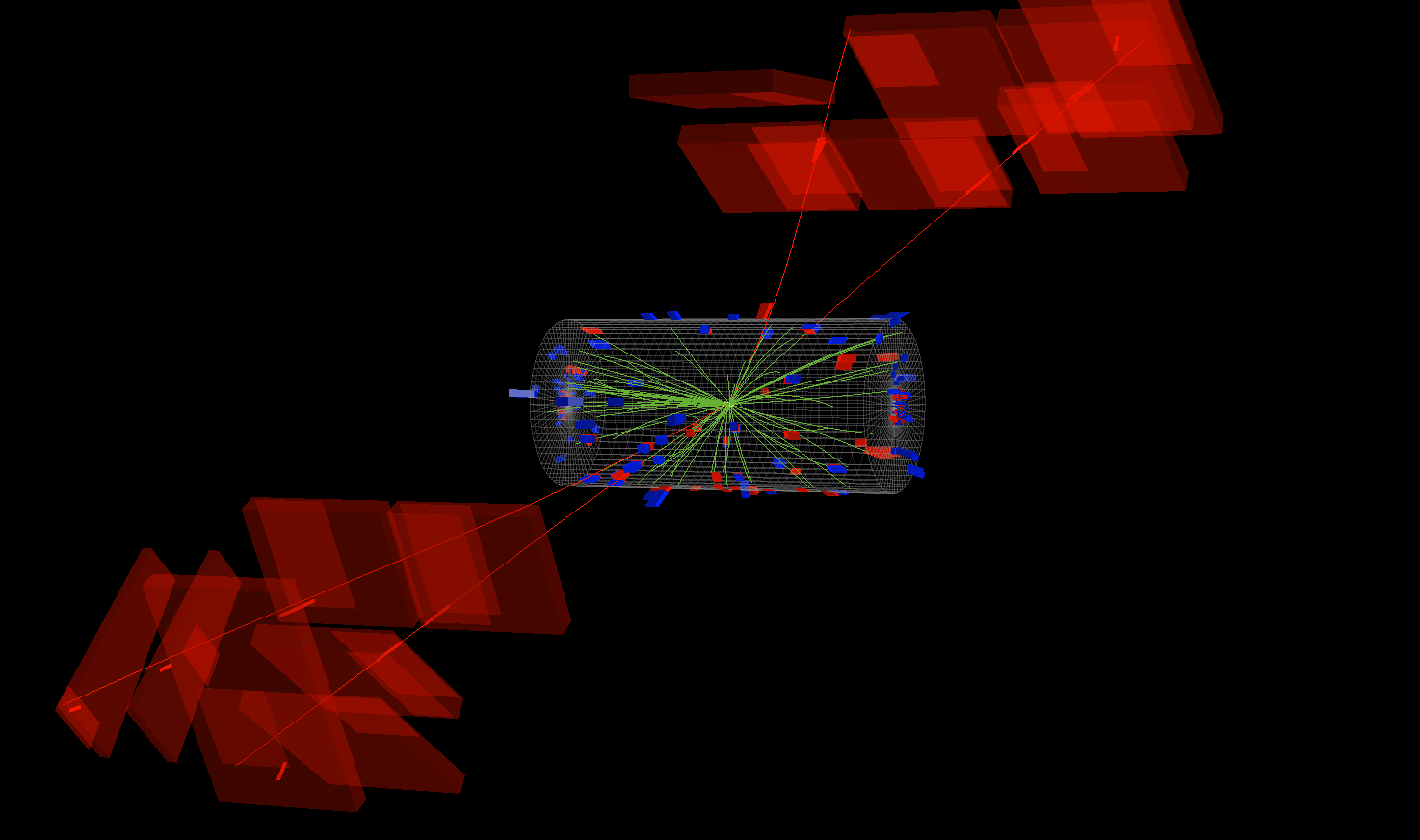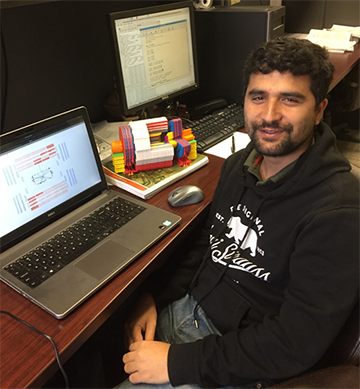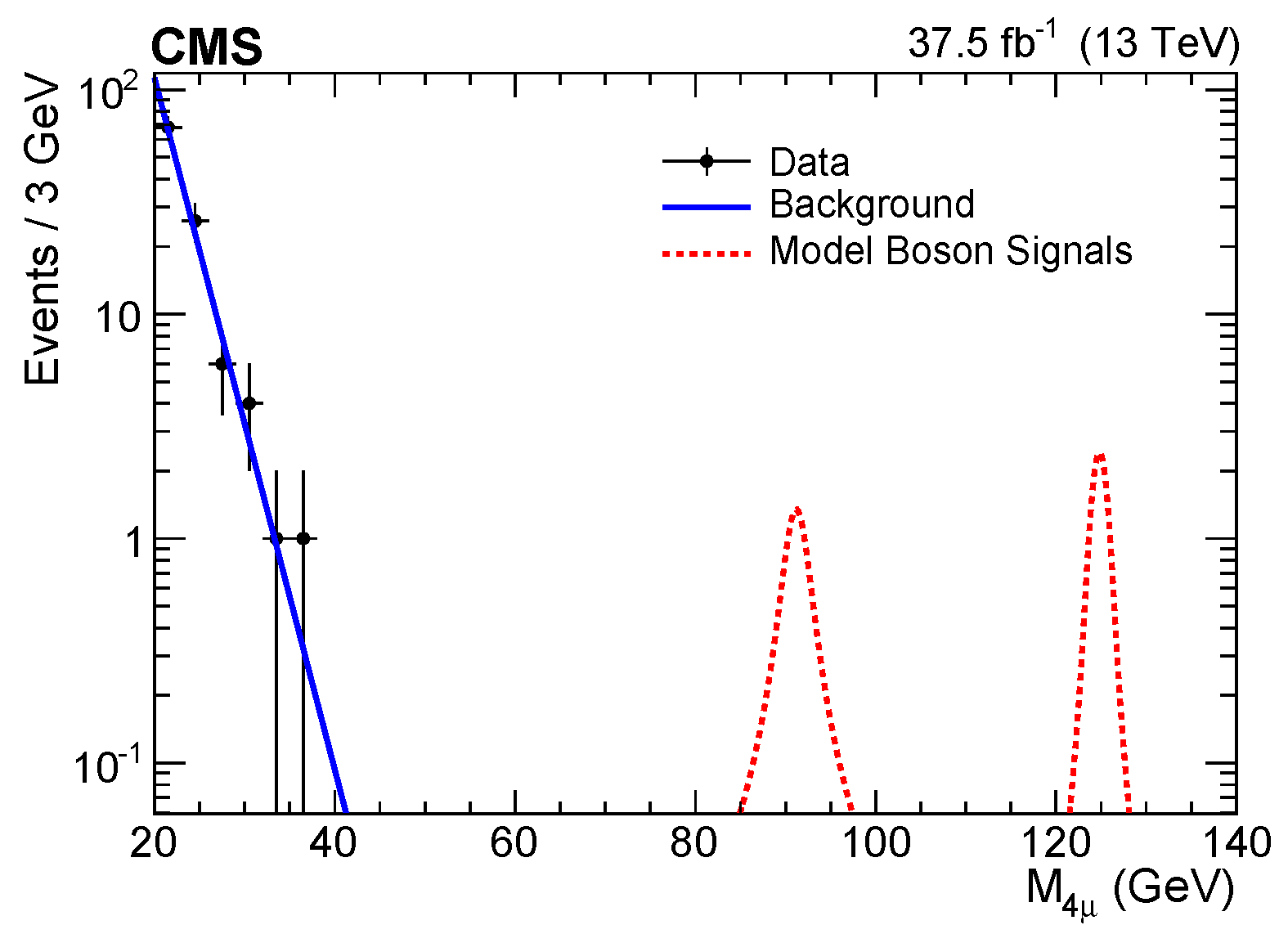Search for Rare Higgs Decays into Quarkonium Pairs
The Standard Model of particle physics asserts that the Higgs boson generates the mass of all fundamental particles. In 2012 a new particle was discovered at the CERN LHC that behaves closely like the Higgs particle predicted by the Standard Model. Since then, the CMS and ATLAS experiments have tested the behavior of the Higgs particle when interacting with several Standard Model particles, including into bottom and top quarks. So far all measurements are consistent with the predictions within the experimental uncertainties. The discovery of the Higgs boson is an educative demonstration on how closely quantities predicted by the Standard Model over the past five decades agree with measurements. Nevertheless, it is widely acknowledged that the Standard Model is an incomplete theory that will not work at all energies.
To begin, the Standard Model only describes visible matter, providing no explanation for the dark matter that is substantially more abundant in the universe. Furthermore, the Standard Model does not address the vast difference between the masses of particles, essentially rephrasing that question to why particles interact differently with the Higgs boson. And since the Higgs boson should be creating its own mass, it would be more fundamental when it instead appeared for example at much higher energies such as where electromagnetic and strong forces unify. These shortcomings are just some of the indications that extra particles with new forces between them might exist.
One of the ways to test for the Standard Model shortcomings is to search for deviations in the behavior of the Higgs boson as predicted by exactly the Standard Model. If for example new particles exist, they can change the possible ways the Higgs boson can decay. Even if the new particles have substantially higher masses than the Higgs boson, at which point a direct decay would be impossible, they can contribute indirectly, or virtually, to a particular decay, possibly increasing its frequency. By comparing the different decay modes to Standard Model predictions, a pattern might emerge that could be the first step to develop new theories beyond the Standard Model.
Several years before the Higgs boson was discovered it was pointed out that its decays into pairs of J/ψ (pronounced Jay-Psi) and Ypsilon particles, commonly called quarkonium pairs, can be significant. The J/ψ and Y are quark-antiquark bound states, of a charm quark and antiquark, or a bottom quark and antiquark, respectively, and the Standard Model makes accurate predictions how often this should be happening at the LHC. To observe such decays according to the theoretical predictions in the Standard Model would require the collection of at least 100 times more proton-proton collisions with the LHC than available today. There are also several ways new particles and forces can substantially increase those decay rates, and any observation of such decay would indicate the Standard Model is wrong.

Figure 1: Event display of a simulated H->YY decay with the Higgs produced in proton-proton collisions at a center-of-mass energy of 13 TeV. The green lines show charged particles reconstructed with the inner trackers of CMS, while the red lines correspond to the muons of the two Y->μ+μ- decays.
Each J/ψ or Y has a chance to decay into pairs of oppositely charged muons, which makes them ideal candidates for the search with the CMS detector. Figure 1 shows the 3D event display of a simulated H->YY event, where each of the Y-particles decays into a pair of muons. In the inner cylinder of the CMS detector, charged particle tracks from the rest of the event are shown as green lines. The four muons are shown as red lines and the muon detectors that detected the muons are shown as red rectangles. With the great acceptance and high efficiency to identify and reconstruct muons, the data analysis finds about every fourth such event produced in proton-proton collisions.

University of Tennessee graduate student Himal Acharya (pictured right) reconstructed and selected the different decays from proton-proton collisions. He actually used samples with only one J/ψ particle to study how often those can be found in data, which were found to be only a few percent different from simulation. These final states turn out to be extremely clean and are extremely rare when two such J/ψ or Y particles are required to be there at the same time, as shown in Figure 2. The red dashed line corresponds to what data would look like if there were Higgs bosons, while the black dots agree with the blue background prediction. This results also concludes that already a single event that shows up at the location of the Higgs boson could present a crack in the Standard Model.
This is an exciting aspect, and before inspecting the plot, the signal regions were covered (kept blind) until the reconstruction and selection procedure (including systematic uncertainties) was completely established. Because after un-blinding no signal was observed, Himal obtained upper limits for the Higgs and Z decays to J/ψ and Y particles. These are the first such measurements ever. The results will be presented at the Moriond conference in March 2019.
This analysis sets the starting point to push the limits lower over the next years with LHC and eventually with the high-luminosity LHC that starts in 2026, and any observed events can be attributed to new physics before ever reaching Standard Model limits. In the coming years, a single data event found in the Higgs signal box is bound to cause a lot of excitement.

Figure 2: Four-muon invariant mass for the H->YY candidates. The data distribution decreases exponentially (an exponential function is shown s blue line). The red dashed lines correspond to assumed 2 signal events for the Z-boson (mass about 91 GeV) and Higgs boson (mass = 125 GeV). There is no event observed in the vicinity of the bosons.
Also see the CMS Collaboration Public Writeup
Courtesy of Professor Stefan Spanier